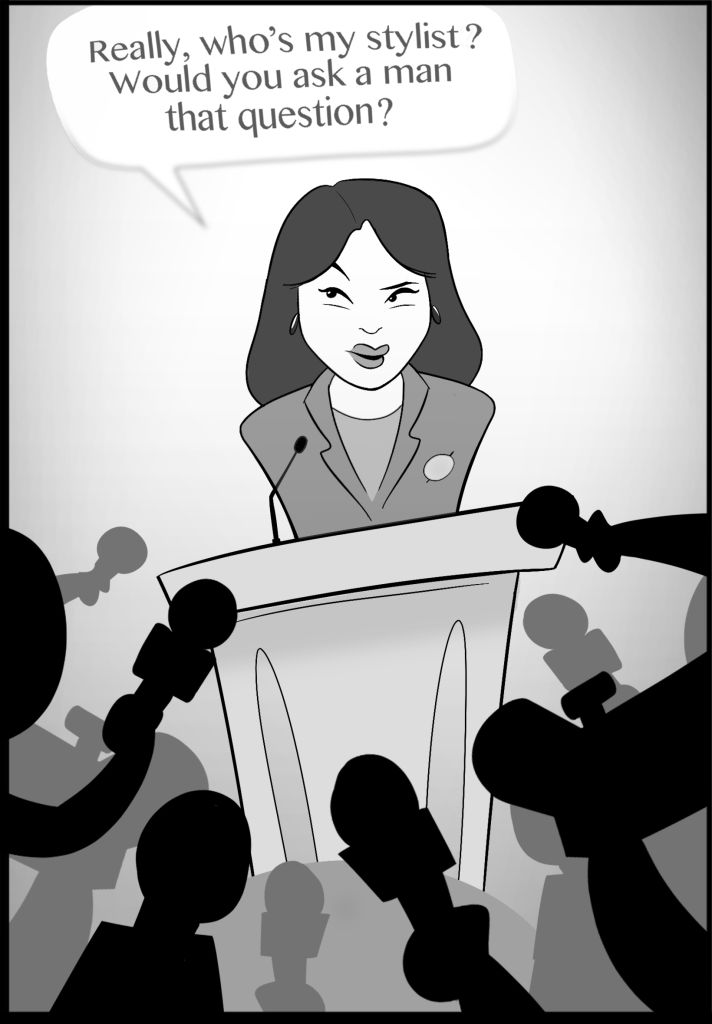Congratulations Canada for doing something historic: having an equal gender cabinet. We’ll ignore for the moment that only 26 per cent of the MPs in the House of Commons are women. Around the world female leaders are still few and far between, so this is a step in the right direction.
The danger here is that the media may take these new female cabinet ministers less seriously than they do their male counterparts, as has been the case for female politicians in the past. It’s all too easy for reporters and columnists to deviate into easy sexist clickbait or off-the-cuff Twitter remarks about a female politician’s appearance or relationships to buy subscribers.
The whispering started well before the new cabinet was sworn in. Some media pundits argued that the powerful positions should be given to the most qualified people instead of being restricted by a quota. Surely female lawyers, scientists, surgeons and generals couldn’t possibly have the same leadership skills as men.
The new female ministers will be watched with the utmost scrutiny, and any failure on their part will be seen as proof that women are not well suited for the job.
Kim Campbell, Canada’s first and only female prime minister, is no stranger to this kind of scrutiny. In 2013 Campbell said that when she was prime minister in 1993, the media chose to focus on her crushing defeat instead of the things she accomplished. Campbell said this is harmful to young women considering entering politics who need to know that her election was not an accident or an anomaly. A female PM could happen again.
Generally sexism turns up not the hard news coverage, but in the columns of the commentators and political pundits.
Take Hilary Clinton, who was called a “she-devil,” by panelist Mike Barnicle on air on MSNBC during her 2008 presidential campaign.
Other media coverage of Clinton during that campaign sparked new conversations about how women in politics should be talked about in the media. Now that Clinton is running again, Rachel Larris of the Women’s Media Center said the sexism has become more subtle. It’s not just overt judgements on appearance or intelligence, but using words like “feisty”, “spitfire”, or “grandmother,” that would never be used to describe a male candidate.
The media has a history of criticizing and dismissing women in politics. Take Chancellor of Germany Angela Merkel. Forbes has named her the most powerful woman on the planet for 10 years running. But the same magazine has criticized her “silly pageboy haircut” and “ill-fitting suits.” If Merkel isn’t immune to these shallow criticisms, than no woman is.
From dresses to pantsuits, the focus on clothing just drives home the notion that the most important thing about a woman is her appearance. Any other sort of success is secondary.
In 2007, the Ottawa Citizen covering an awards dinner mentioned a female MP “looked stunning in a black gown with a plunging neckline,” with no mention of the men’s clothing.
Of course, there are articles written about the appearance of male politicians too, and our new ‘sexy’ prime minister is a case in point. But they are far fewer and men are given unique identities besides of their stylish clothing or handsome face.
This has not been the case for Sophie Grégoire-Trudeau, Canada’s first lady. The cover of Metro News Ottawa on Nov. 12, 2015 paired a cut-out of Prime Minister Justin Trudeau defending his gender-equal cabinet with his now-famous bon mot “Because it’s 2015” with two photos of his wife in different outfits. The title? “Elegant and Relaxed: Sophie Trudeau’s Style Evolution.”
The article goes on to detail her clothing choices at different events and her preference for Canadian designers. To say she “cleverly chose to #WearCanada in an alpaca wrap coat” for her husband’s swearing in is an insult to her intelligence. What makes this focus on Grégoire-Trudeau’s appearance disturbing is that she has spoken openly about her struggles with bulimia as a teen. She may be an accomplished TV journalist, yoga instructor and advocate for women’s self-esteem and gender equality, but none of that seems to be as important as making her a dress-up doll for the Canadian public.
But things can get better. In 2014 a male Vancouver Observer journalist told Liberal MP Chrystia Freeland on Twitter to use her “big girl voice” in the House of Commons. She called him on it and he later apologized.
It is the media’s role to write critically about the politicians elected to serve this country.
However, they should treat all genders with the same respect and not fall into sloppy sexist arguments. Canada deserves better than that.



